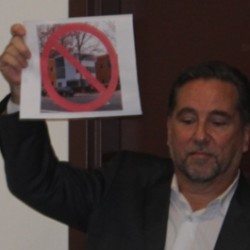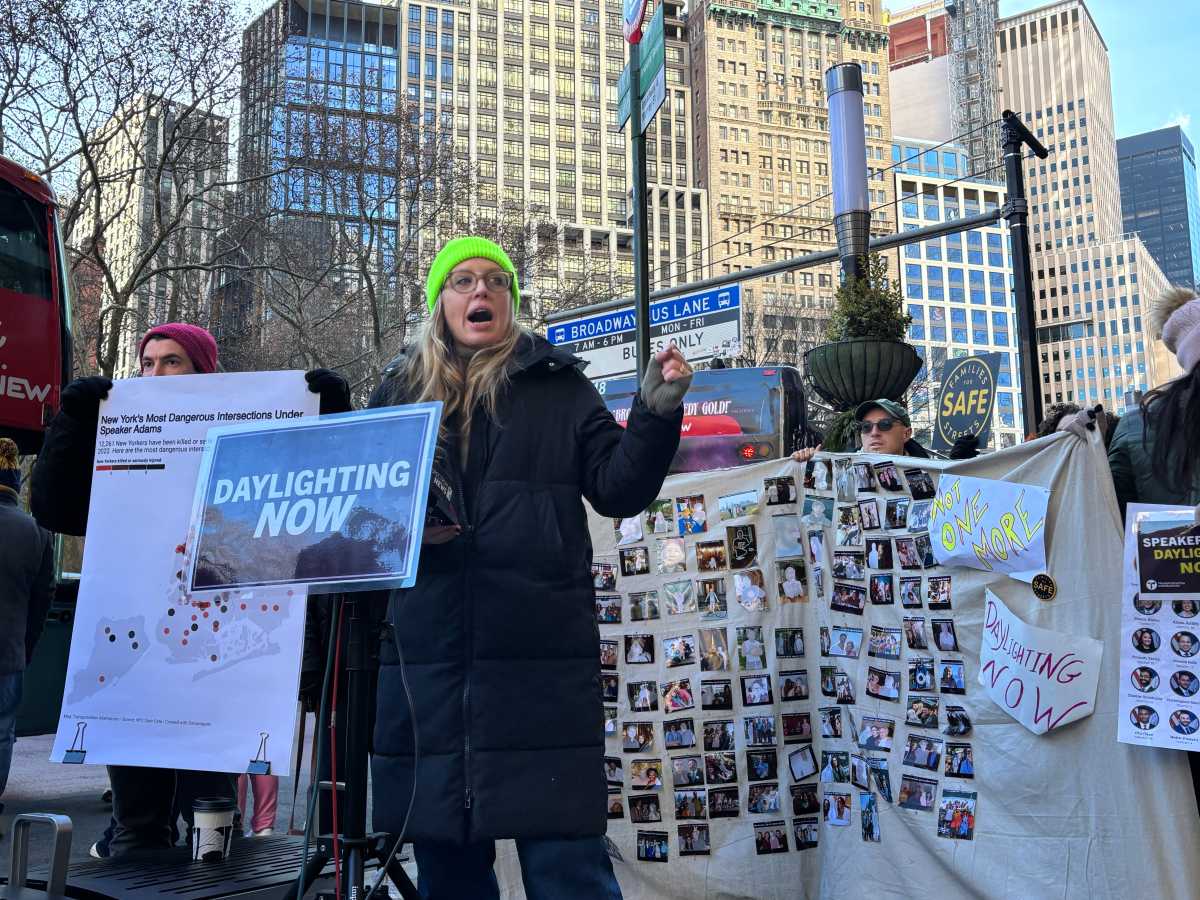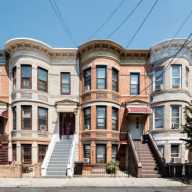Hearing (Photo: SunnysidePost)
Oct. 17, 2013 By Christian Murray
At least 75 Sunnyside residents turned out in force to the Landmarks Preservation Commission Tuesday to voice their outrage about a proposed 8-unit apartment dwelling–accompanied by an architecturally significant aluminum house—that would be located within the confines of the Sunnyside Gardens Historic District.
The residents– who were joined by State Senator Mike Gianaris, Assemblywoman Marge Markey, Councilman Jimmy Van Bramer and Community Board 2 Chairman Joe Conley–told the Landmarks Preservation Commission that the Aluminaire House was completely out of character to the red-brick landmarked neighborhood—and that its inclusion defied the purpose of land marking, which is about uniformity.
The proposed development would take place on the corner of 39th Avenue and 50th Street, the site of the former Phipps playground, where many Sunnyside and Woodside residents played as children. With its old shed, sandbox pavilion and swings & slides still there, the playground is one of the only remaining depression-era playgrounds still in existence.
The Landmarks Preservation Commission has the final word on whether the development will be permitted to be built—and it is unclear when it will render its decision. A spokeswoman for the Commission said that a date has not been set and it is not clear whether a decision will be made any time soon.
The spokeswoman said that there is a great deal of public comment for the commission to review—as well as examining the intricacies of the proposal.
The Aluminaire House would be unoccupied and would essentially be a vacant architectural museum piece. The adjacent residential units would be clad with terracotta-colored panels, with a brick pattern. The apartments would be built in an L-shape around the aluminum structure, with open public space between them.

Photo: QueensPost
Several architects—as well as a handful of residents—support the project. The advocates noted that the Aluminaire House– built in 1931 as a prototype for affordable housing–was the first all-metal house in the US and was a pivotal work of modern architecture.
They argued that the house was a built around the same time as the modest homes in Sunnyside Gardens and is of a similar scale—making it a good historical fit.
Meanwhile, Michael Schwarting, the architect who presented the proposal said “the contrast of the Aluminaire House would actually compliment the [red-brick] neighborhood.”
Several Sunnyside residents held up signs that had a picture of the development with a red line drawn through it while Schwarting presented the plan.
One resident, during the public comment period, told the commission: “To all these architects who think it’s a great idea, how would they like it if this house was dropped into their neighborhood?”
Stephen Cooper, a local resident and Community Board 2 member, said the Aluminaire house should be preserved but not in Sunnyside Gardens. “Maybe you could take it to Central Park, where thousands of people would see it.”
The elected officials didn’t pull any punches when they spoke before the commission.
Van Bramer said that the Sunnyside Gardens community fought hard to win the historic district designation in 2007 and it was to prevent “wildly out of proportion” developments like these.
Van Bramer said that just because the Aluminaire House was built around the same time as the Sunnyside Gardens homes was inconsequential. “The Empire State Building was also constructed in 1931 and it would be no more appropriate that the Aluminaire House.”
He said that 350 people had contacted his office in opposition to the proposal, with only five voicing their support.
Meanwhile, Mike Gianaris said, “I’ve been in public service for 13 years and I have seen community boards discuss all sort of things—such as whether adult clubs should have liquor licenses–but I have not seen such uniform opposition as with this project.”
Marge Markey, too, said it simply didn’t belong. Meanwhile, Joe Conley, who told the commission that Community Board 2 opposed the plan, described it as an “unfair imposition” to the Sunnyside Gardens community.
Jack Freeman, a local resident and former Landmarks Commissioner, told the Commission that he thought the architect had been sensitive to the historic character of the Gardens. “I think the massing and scale [of the Aluminaire Home and 8 units] is appropriate…and it accentuates the character of Sunnyside Gardens.”
“It’s a great opportunity to restore and make accessible a prototype… where no other like it exists,” Freeman said.
Meanwhile, Laura Heim, a local architect, supported the overall concept, although recommended that that the materials and design of the residential units be altered.
The commission, upon rendering its decision, might approve, deny or request the developer to modify the plan. If a modification is required, the developer is not subject to another public hearing.



































